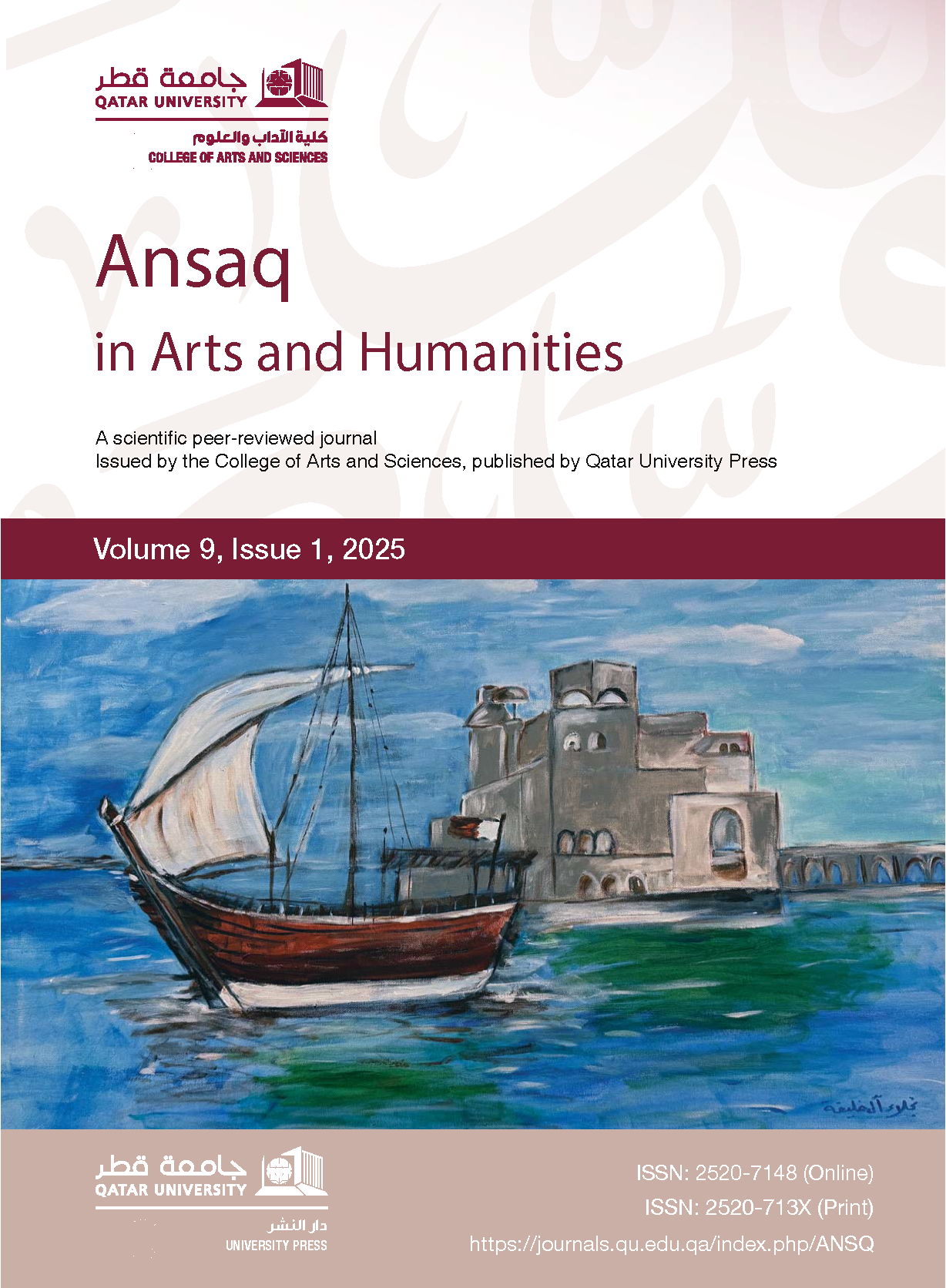Navigating the Digital Shift: Challenges and Solutions in Translator and Interpreter Training in Algeria
Abstract
The Fourth Industrial Revolution has remarkably transformed the translation and interpreting education field. It has introduced newer and more advanced technologies that have affected translator and interpreter training strategies, bringing in more innovative technological tools, artificial intelligence, and digital learning platforms. This research paper investigates the integration of translation and interpreting technologies in academic training at the High Arab Institute of Translation in Algiers. It uses a mixed-methods approach, combining quantitative data from a questionnaire and qualitative information from verbal reports. The sample consisted of 24 students and alumni from the institute who completed the questionnaire, while the researchers collected verbal reports from other students and teachers as a complementary method. The results indicate that participants are aware of the benefits of technology in their field. However, insufficient practical training, flawed technological infrastructure, and insufficient exposure to advanced tools affected their experiences. As many expressed skepticism towards using Artificial Intelligence (AI) to generate translations, others voiced doubts concerning using technological aids in simultaneous interpreting. These findings underscore a need for curriculum enhancements to align Algerian training programs with industry standards and prepare students for a technology-driven job market. Finally, the study emphasizes the need to find solutions to prepare today’s translators and interpreters by equipping them with technological and digital skills, enabling them to manage the vast amount of data and succeed in the ever-evolving digital market.
Metrics
##plugins.themes.bootstrap3.article.details##
Artificial IntelligenceTechnological ToolsAcademic TrainingPractical TrainingJob market
Al-Darraji, Othman. “An Exploratory Study on Improving Translation Education in Libyan Universities: A Mixed-Method Study with Student Surveys and Faculties Staff Members Interviews.” The Scientific Journal of University of Benghazi, vol. 36, no. 2, 2023, pp. 79–86. https://doi.org/10.37376/sjuob.v36i2.4291
Alotaibi, Hind M. “Teaching CAT Tools to Translation Students: An Examination of Their Expectations and Attitudes.” Arab World English Journal, special issue, no. 3, 2014, pp. 65–74.
Andriani, Herdi, & Kasriyati. “Multimedia in Translation Class: A Technology Acceptance Model.” Journal of English Culture, Language, Literature and Education, vol. 11, no. 2, 2023, pp. 338–55. https://doi.org/10.53682/eclue.v11i2.7735
Bouguesmia, Mohammed Tewfik. “Using AI in Translation: A Technological Leap or a Translator’s Nightmare.” ALTRALANG Journal, vol. 2, no. 2, 2020, pp. 78–102.
Bounaas, Chaouki. “Traduction automatique en Algérie: État des lieux des utilisations.” Journal of Languages and Translation, vol. 3, no. 1, 2023, pp. 71–82.
Bououden, Kohil, & Daoud. “Technological Tools Integration in the Academic Training of Translators and Interpreters: A Study on the Teachers’ Perspectives.” Langues & Cultures, vol. 5, no. 2, 2024, pp. 96–112.
Castillo-Chumpitaz, Gutiérrez-Gargurevich, & Haya de la Torre Castro. “Collaborative Learning and Emergency Remote Teaching in Interpreter Training: Teachers’ and Students’ Experiences during COVID-19.” 2022 XVII Latin American Conference on Learning Technologies (LACLO), IEEE, 2022, pp. 1–8. https://doi.org/10.1109/LACLO56648.2022.10013419
Corpas Pastor, Gloria. “Tools for Interpreters: The Challenges That Lie Ahead.” Current Trends in Translation Teaching and Learning E, vol. 5, 2018, pp. 138–82. https://doi.org/10.5281/zenodo.5940648
Dianati, Uchiyama, & Akagawa. “Applications of Technologies in T&I Courses in Australia: Perceptions of T&I Academics.” Journal of Translation and Language Studies, vol. 3, no. 2, 2022, pp. 50–80. https://doi.org/10.48185/jtls.v3i2.511
González Pastor, Diana. “Introducing Machine Translation in the Translation Classroom: A Survey on Students’ Attitudes and Perceptions.” Revista Tradumàtica, no. 19, 2021, pp. 47–65. https://doi.org/10.5565/REV/TRADUMATICA.273
Han, Lili, Yuying Wang, and Yumeng Li. “Student Perceptions of Online Interpreting Teaching and Learning via the Zoom Platform.” Teaching English as a Second Language Electronic Journal (TESL-EJ), vol. 26, no. 1, 2022, pp. 1–19. https://doi.org/10.55593/EJ.26101INT
Kornacki, Michał. Computer-Assisted Translation (CAT) Tools in the Translator Training Process. Peter Lang, 2018.
Li, Xiang, Zhaoyang Gao, and Hong Liao. “The Effect of Critical Thinking on Translation Technology Competence among College Students: The Chain Mediating Role of Academic Self-Efficacy and Cultural Intelligence.” Psychology Research and Behavior Management, vol. 16, 2023, pp. 1233–1256. https://doi.org/10.2147/PRBM.S408477
Mahfouz, Iman. “Attitudes to CAT Tools: Application on Egyptian Translation Students and Professionals.” Arab World English Journal, special issue, no. 4, 2018, pp. 69–83. https://doi.org/10.2139/ssrn.3226682
Marczak, Mariusz. “Developing Selected Aspects of Translation Competence through Telecollaboration.” English for Specific Purposes World, vol. 16, no. 48, 2016, pp. 1–12.
Martínez, Luz. “L’impact de la technologie sur les traductions spécialisées. Le cas de la traduction médicale.” Des Mots Aux Actes, 2019, pp. 309–26, https://doi.org/10.15122/isbn.978-2-406-09779-2.p.0309
Omolu, Fikriani Aminun, and A. Mappewali. “The Impact of Translation Tools towards Student Translators’ Skills.” Premise: Journal of English Education and Applied Linguistics, vol. 13, no. 1, 2024, pp. 340–67. https://doi.org/10.24127/pj.v13i1.8731
Saldanha, Gabriela, and Sharon O’Brien. Research Methodologies in Translation Studies. Routledge, 2014.
Sánchez-Castany, Roser. “Integrating Technologies in Translation Teaching: A Study on Trainers’ Perceptions.” The Interpreter and Translator Trainer, vol. 17, no. 3, 2023, pp. 479–502. https://doi.org/10.1080/1750399X.2023.2237330
Tian, Jia, and Zhang. “Investigating Students’ Attitudes towards Translation Technology: The Status Quo and Structural Relations with Translation Mindsets and Future Work Self.” Frontiers in Psychology, vol. 14, 2023, pp. 1–16. https://doi.org/10.3389/fpsyg.2023.1122612
Wulansari, Atsani, and Gilang Fadhilia Arvianti. “Technology and Its Requirement for Teaching Translation and Interpreting in the Disruptive Era.” Proceedings of the 1st International Conference on Language and Language Teaching, EAI, 2020, pp. 1–9.
Zhang, Jia. “Exploring Undergraduate Translation Students’ Perceptions towards Machine Translation: A Qualitative Questionnaire Survey.” Proceedings of Machine Translation Summit XIX, Vol. 2: Users Track, Asia-Pacific Association for Machine Translation, 2023, pp. 1–10. https://aclanthology.org/2023.mtsummit-users.1


